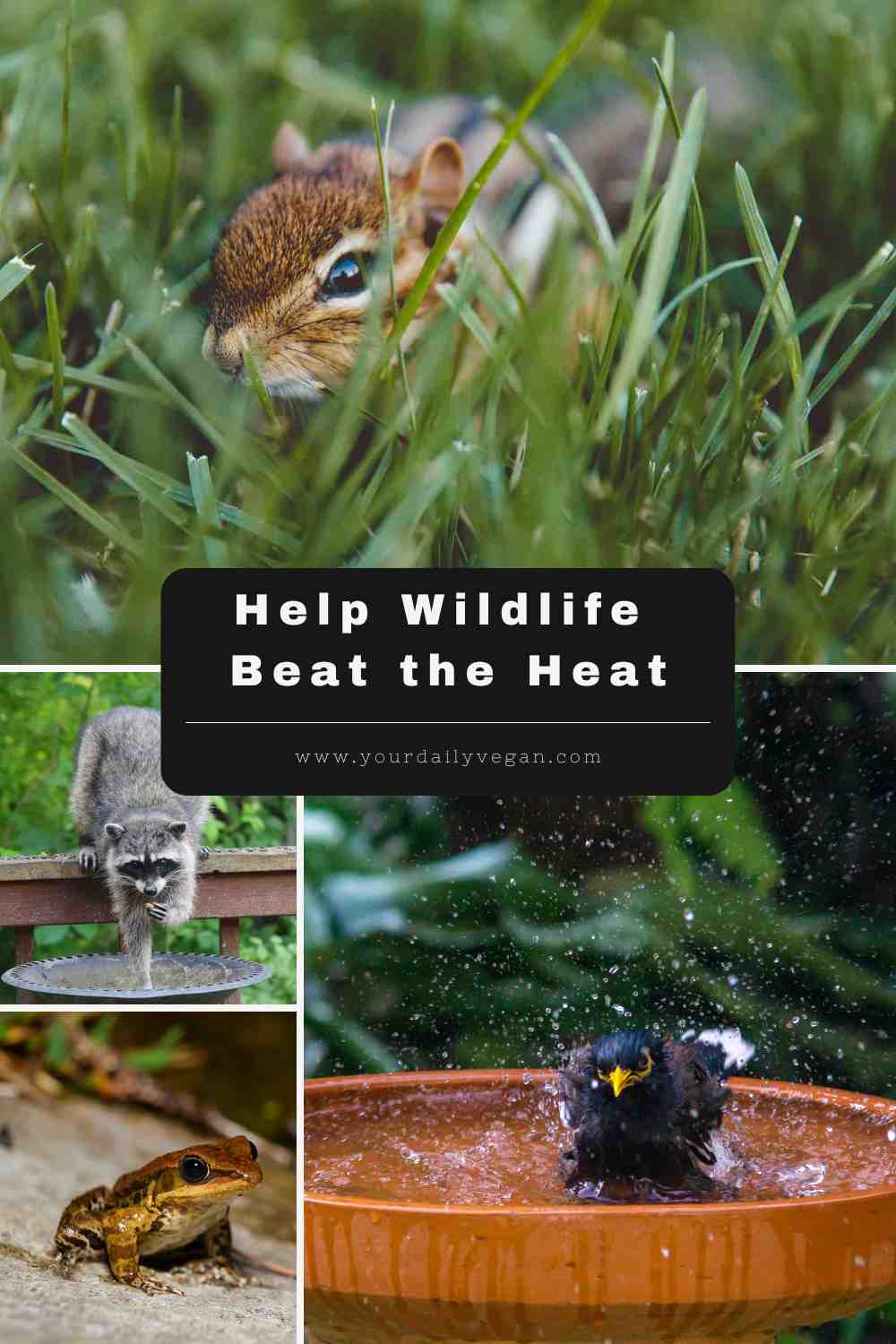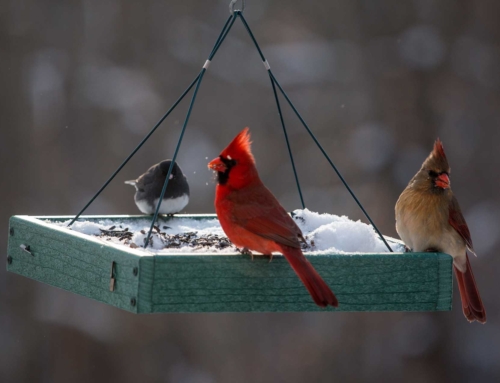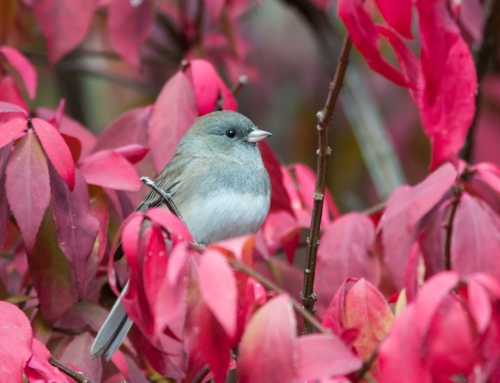How to Help Backyard Wildlife Survive the Heat
Disclosure: This post may contain affiliate links
Roll out the welcome mat by turning your backyard into a cool, refreshing sanctuary for all.
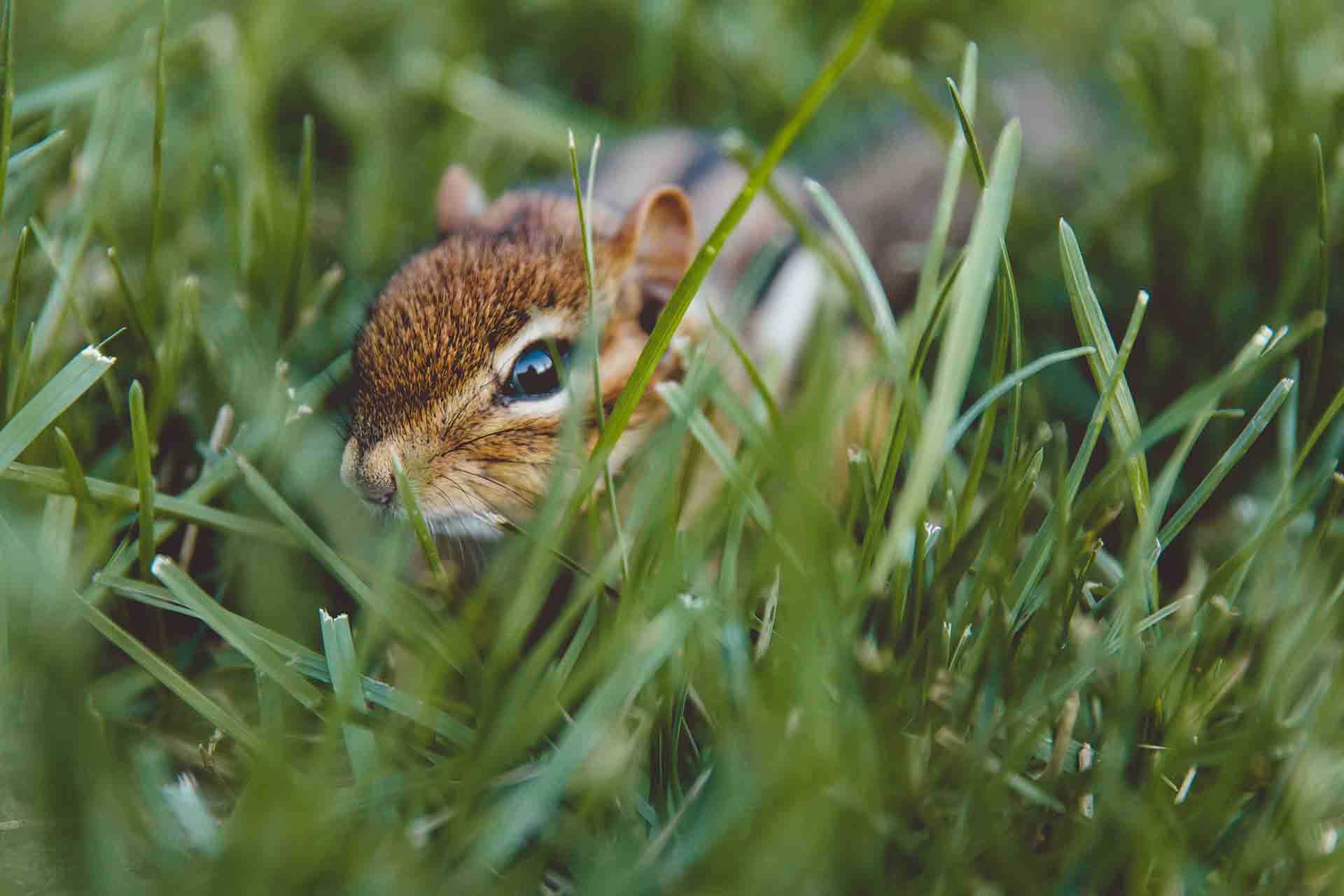
What's in this post
Summer is the hottest season, and it’s only getting hotter. As temperatures soar, backyard wildlife faces numerous challenges in finding water, shade, and nourishment. Extreme heat can mean heatstroke, overexertion, and even death for these animals.
We can support animals and help them endure the heat by taking a few simple steps. Here are some effective ways to ensure the well-being and survival of backyard wildlife during scorching weather.
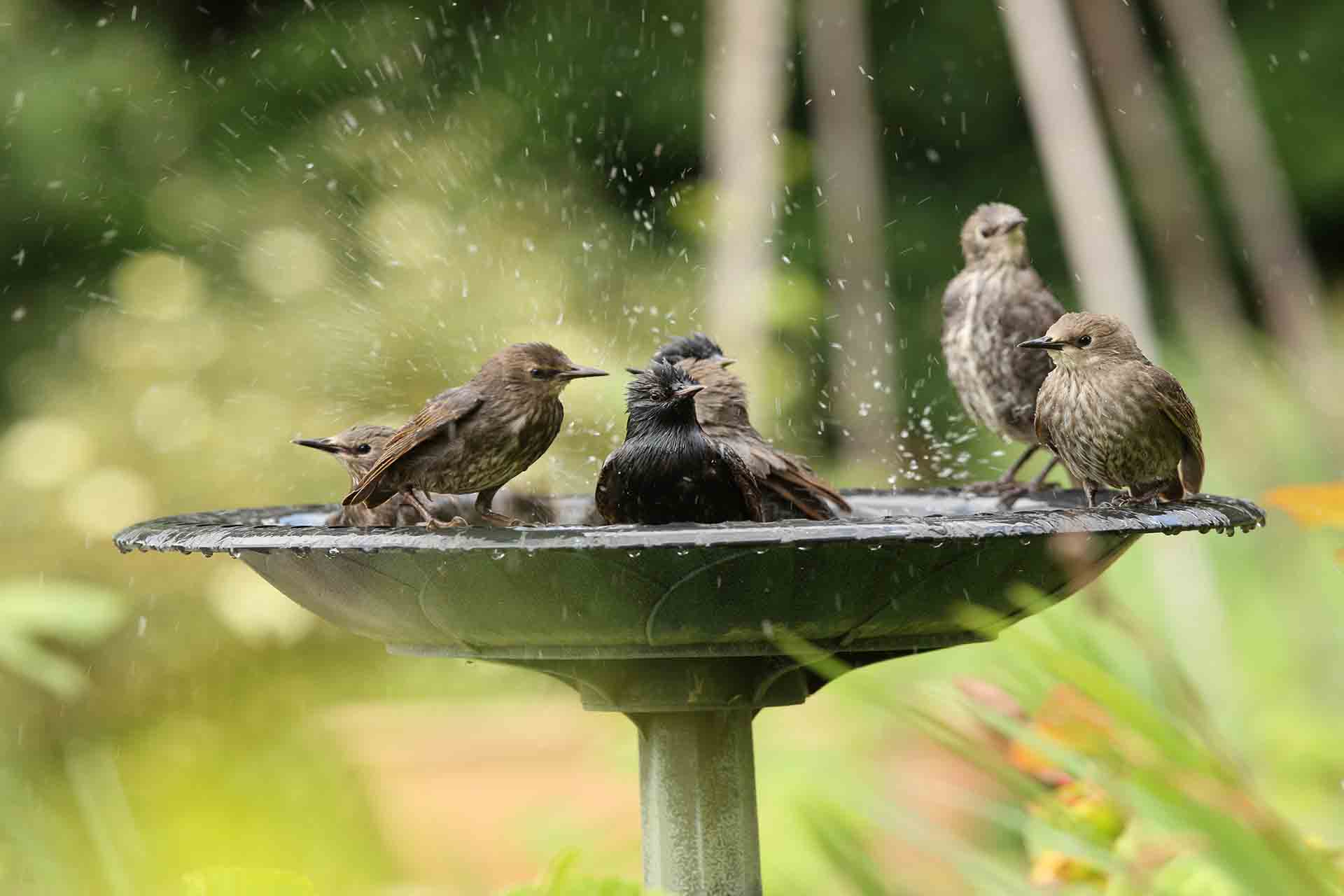
Young Starlings bathing in a bird bath / Source
Provide water
Water is the most important element in keeping animals cool and hydrated when the temperatures rise. You might be familiar with birds visiting bird baths, but they aren’t the only ones who benefit from having access to clean water.
Animals like squirrels, chipmunks, rabbits, toads, opossums, raccoons, skunks, deer, and foxes will all appreciate a cool sip on a hot summer day. Even insects like bees and butterflies need access to water, often returning to the same source daily once they find it. You never know who will surprise you by stopping off for a sip of water.
Help backyard wildlife survive the heat with these water tips:
- Place shallow water dishes or birdbaths throughout your yard to provide a reliable water source for wildlife.
- Ensure the water is replenished regularly to prevent stagnation and evaporation.
- Add stones or branches to the water feature to provide safe landing spots for birds and insects.
- Installing a small fountain or dripper can attract a wider range of species and create a refreshing oasis.
RELATED READING: How to Help Pollinators
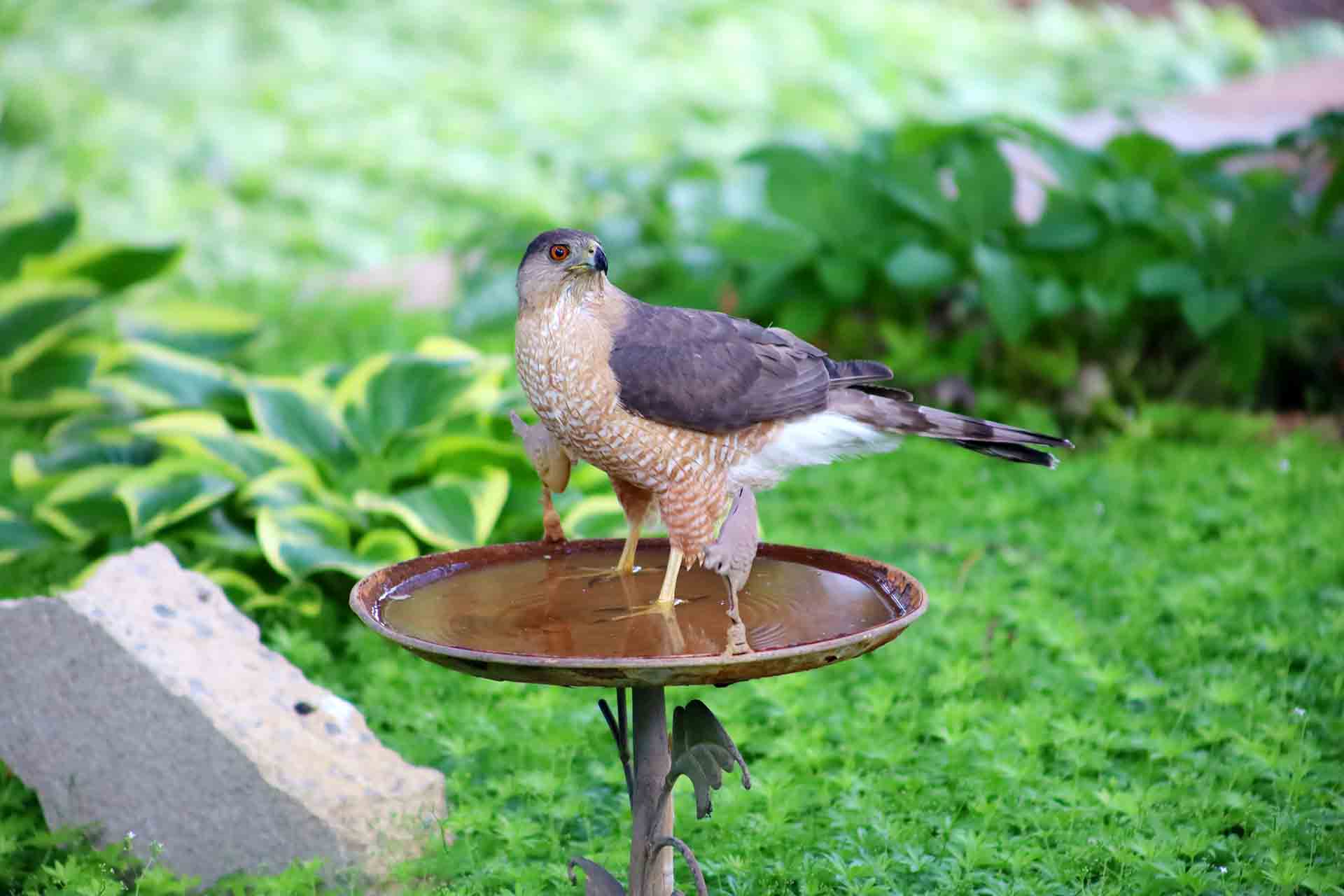
Cooper’s Hawk standing in a bird bath / Source
Birdbath 101
Birdbaths are a simple way to add a reliable water source to your yard. You can purchase a pre-made bird bath or make your own. All you need is a container, a cleaning brush, and water.
- A bird bath can be made from any container that can hold water. To accommodate both large and small species, choose a variety of containers with different depths. Choose containers no bigger than 3 inches deep for smaller birds and size up for larger ones. Add extremely shallow dishes for butterflies, bees, and insects to sip from. If your container is too deep, add a layer of rocks to the bottom for birds and insects to stand on while drinking.
- While you can use any container, try to choose one where the interior is textured. Much like you would if the bird bath was too deep, add a layer of rocks to the bottom if you can’t find a textured container. This will help the birds get a foothold while in the bath.
- Set up your birdbath near shrubs or trees, or select locations with easy access for animals to find shelter to avoid predators.
- Keep it clean! Regularly cleaning bird baths is necessary for the summer to keep the water fresh and healthy and prevent mosquitos from breeding in the standing water. Use a stiff scrubbing brush to remove bird droppings and algae from the inside of the bath, rinse and refill with fresh water.
- Add moving water. Moving water attracts birds due to the splashing and reflections on the water. “The sound of moving water like a stream or even water slowly dripping into a basin or against a rock or foliage will attract many species of birds,” says Mark Kiser, Great Florida Birding and Wildlife Trail coordinator. The moving water also helps slow algae growth and discourages mosquitoes from breeding.
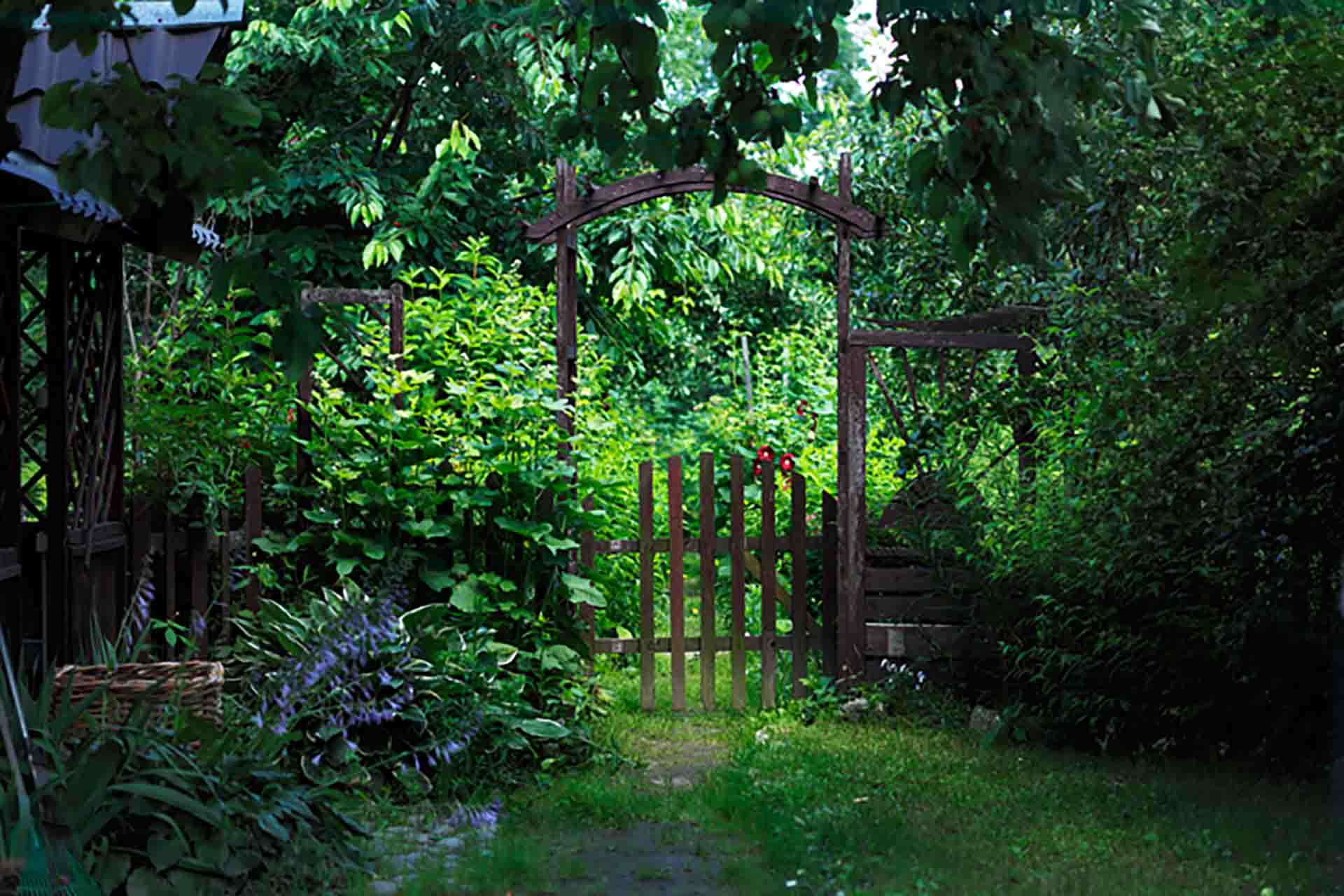
Shade-filled garden / Source
Create shade
Many animals will seek shelter during the hot times of the day to help them cope with summer temperatures. Add shaded areas to your yard by creating tiered landscaping and adding vegetation along buildings for more shelter. “Native trees, shrubs, and vines are beneficial in the landscape to provide shade, shelter, and food for birds,” says Angel Wintrode, president of the Bi-State Wildlife Hotline of Missouri and Illinois. “A dense, fruiting shrub, for example, can provide all three at the same time.”
Place bird feeders in cool, shaded areas of the yard during summer. Doing so will keep birds more relaxed while feeding and prevent seeds and other foods from spoiling. If you can, place houses in breezy areas for additional cooling effects. Bird houses should also be mounted in shady locations with air holes to provide circulation.
Help backyard wildlife survive the heat with these shade-filled tips:
- Plant native trees, shrubs, and tall grasses to provide shade and shelter for wildlife.
- Consider creating a wildlife-friendly garden with dense foliage that provides cool and shaded areas.
- Strategically place rocks, logs, or brush piles to offer hiding places for small mammals, reptiles, and insects.
- Erect birdhouses or nesting boxes in shaded areas to provide bird refuge during the day’s hottest hours.
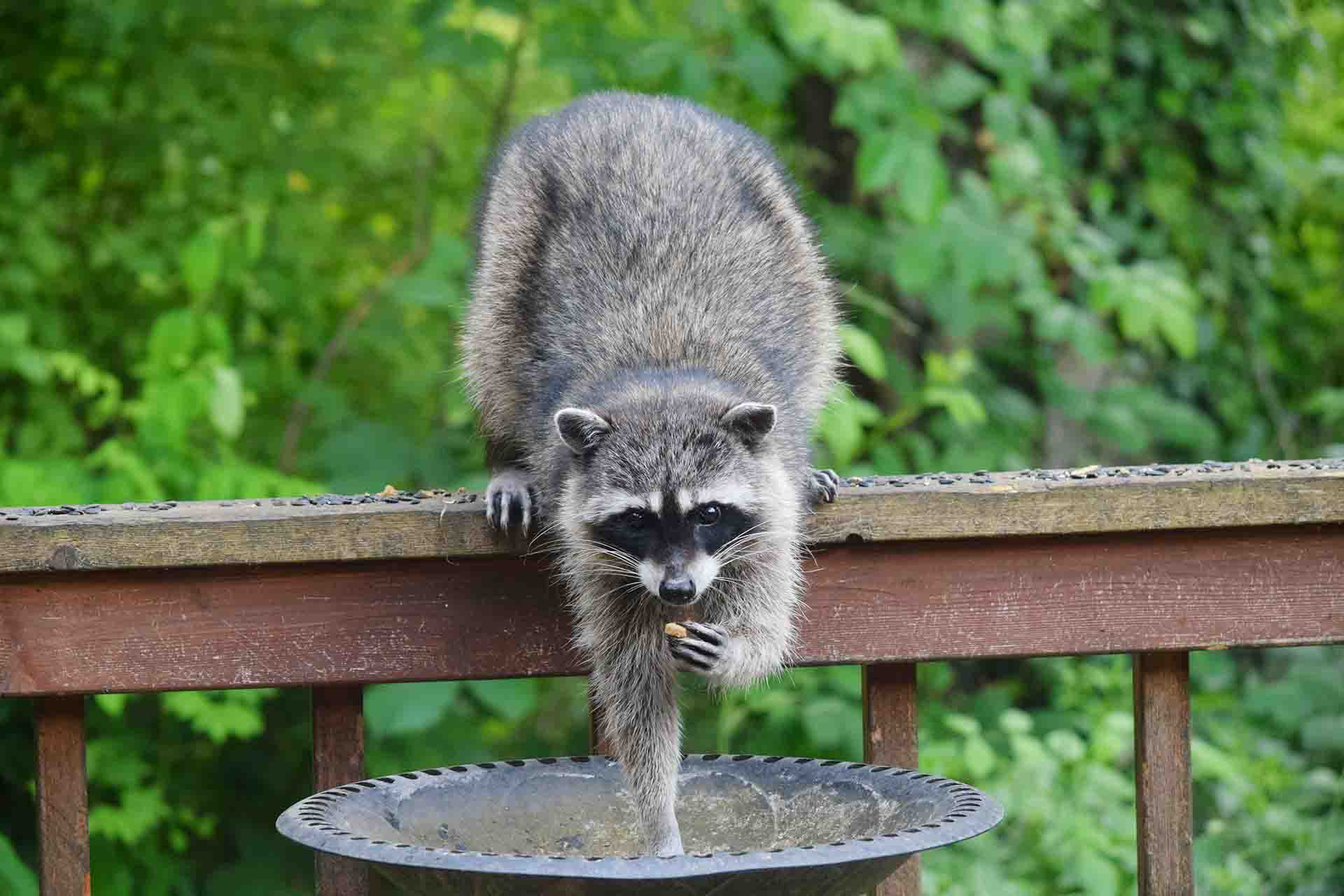
Raccoon stopping by for a snack / Source
Offer food
Offering food to wildlife during hotter temperatures is super important for their survival. Here’s why it makes a big difference: When it gets really hot outside, natural food sources can become scarce because plants and insects struggle to thrive. Providing extra food like seeds, juicy fruits, or sweet nectar ensures that wildlife has something to eat even when their usual food supply is limited. This helps them stay energized and healthy, which is crucial for their overall well-being.
Some of these foods, like juicy fruits and nectar, can also keep them hydrated. Finding enough water can be tough for animals during scorching weather, so offering water-rich foods helps them stay refreshed.
You can help backyard wildlife survive the heat by putting out food because we’re not only helping wildlife stay nourished, but we’re also attracting different species to our backyard, which is pretty important for promoting biodiversity. This creates a balanced environment that can better handle the challenges of climate change, helping wildlife adapt to changing conditions.
So, let’s lend a hand and fill those feeders!
